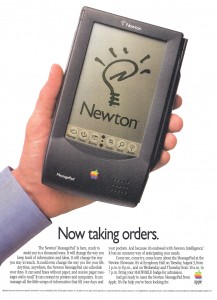First Automobile Accident
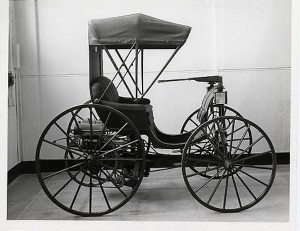
The first auto accident on record occurs in New York City when a Duryea Motor Wagon driven by Henry Wells collides with a bicycle ridden by Evylyn Thomas. New Yorkers probably accused Henry of being from Jersey, but he was actually from Massachusetts.
Discovery Docks with International Space Station
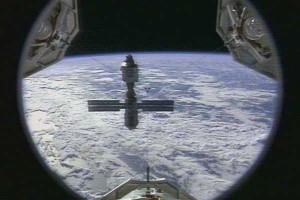
The Space Shuttle Discovery completes the first docking with the International Space Station (ISS).
Apple Newton Announced
May 29, 1992
At the Consumer Electronics Show (CES) in Chicago, Apple Computer CEO John Sculley first announces the coming release of the Newton personal digital assistant to a group of reporters, explaining that the Newton “is nothing less than a revolution.” Although there was not a fully functioning prototype available, the Newton technology is demonstrated, including how to order a pizza by moving topping icons onto a pie and then faxing the order from the device.
The Newton is Apple’s first major new product line since the Macintosh was released eight years earlier. The Newton unveiling generates immediate buzz, but due to several factors, Sculley’s announcement will ultimately be considered a major mistake. The announcement itself tipped the company’s hand to its competitors and wildly inflated consumer expectations. The Newton’s release was delayed until August of 1993, and when it was released, it was not as user-friendly as expected. Specifically, the core hand-writing recognition feature was widely criticized as buggy and inaccurate. While the technology was greatly improved in subsequent revisions, the Newton never gained much commercial success, and shortly after his return Steve Jobs discontinued the Newton in 1998.
GIF is Not Peanut Butter

CompuServe releases the Graphics Interchange Format (GIF) standard as a new computer graphics file format. Due to color limitations, the GIF format is unsuitable for reproducing color photographs, but it is well-suited for more simple images such as graphics or logos with solid areas of color. This made it probably the most popular graphics format for the early Internet, until the famous “GIF licensing controversy” soured many designers to its use. The PNG format was developed in response as an alternative to GIF to get around the licensing issues. However, all relevant patents have since expired and the GIF format may now be freely used. Today it still sees widespread use, especially when simple animations are needed.
First Modern Color Movie

The Warner Brothers’ film On With the Show, the first talking movie that is all in color, debuts at New York City’s Winter Garden theater. The film uses two-color Technicolor and Vitaphone sound.
Windows Hits Version 2.1
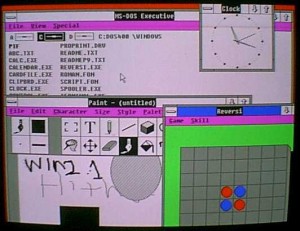
Microsoft releases 2 versions of Windows 2.1 – One for 286 computers and one for 386 computers. Do you remember this version of Windows? No? Not many people do. It wasn’t until version 3 that Windows had any sort of appreciable user base.
Bill Gates’ Internet Tidal Wave
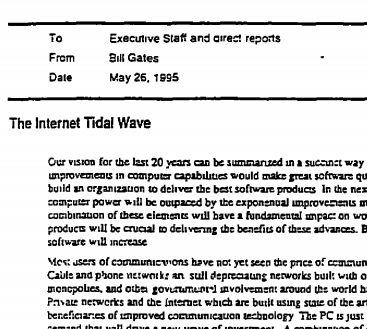
Realizing his company had missed the boat in estimating the impact and popularity of the Internet, Microsoft CEO Bill Gates issues a memo titled, “The Internet Tidal Wave,” which signaled the company’s focus on the global network. In the memo, Gates declared that the Internet was the “most important single development” since the IBM personal computer — a development that he was assigning “the highest level of importance.” Still, it is curious why it took someone who was regarded as a technology “innovator” so long to realize this.
Return of the Jedi
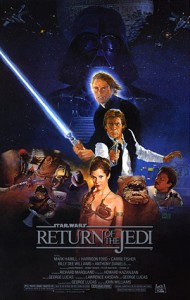
The third installment in the original Star Wars trilogy, Return of the Jedi, is released six years to the day after the first Star Wars movie. Return of the Jedi continued to raise the bar in special effects technology that its predecessors set. The film’s final space battle, for example, was of a size and scale unprecedented at the time.
A Long Time Ago in a Galaxy Far, Far Away …
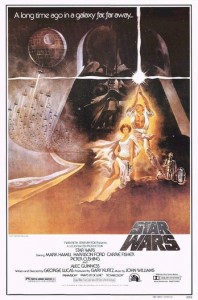
The motion picture Star Wars is released in thirty-two US theaters. The film will immediately break records unlike any before it, essentially becoming the first blockbuster in history. The film’s unprecedented use of special effects sparked a revolution of movies using technology-based visual effects. Perhaps the film’s greatest contribution to technology was the creation two years earlier of the company Industrial Light and Magic, which is still the leading special effects house in the industry.
First Night Baseball Game

The first night major league baseball game is played in Cincinnati. The hometown Reds defeated the visiting Philadelphia Phillies 2-1. Night baseball caught on around the league very quickly – except for the Chicago Cubs, who didn’t play a home night game until 1988. Why am I not surprised?

